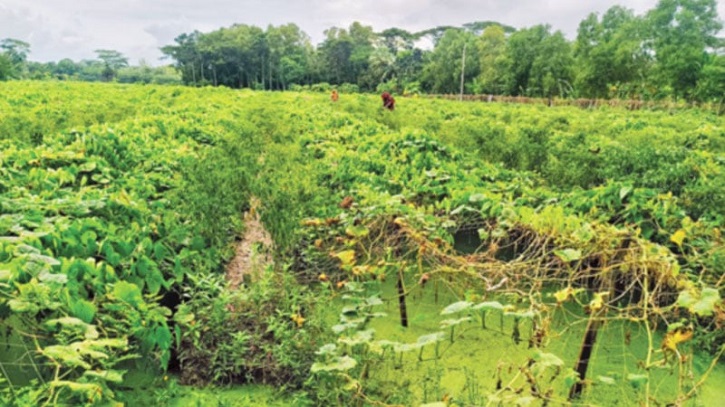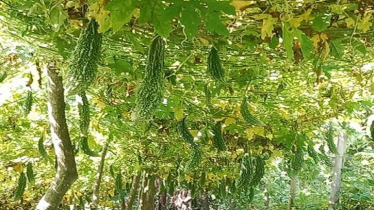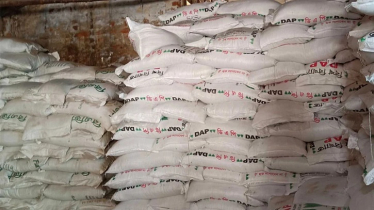
Bhola, Bangladesh’s largest island district, declared by local authorities as the “Queen Island of Bangladesh,” is witnessing a rapid transformation in agriculture. Once plagued by waterlogging and poor connectivity, its low-lying lands are now thriving with crops and fish through the sorjan farming method, which is unlocking strong commercial potential for agriculture in the region.
Bhola is a flat district averaging 10–19 feet above sea level, surrounded by the Meghna and Tetulia rivers and influenced by the Bay of Bengal. Large areas remain submerged for extended periods each year, with monsoon tides raising water levels by 10–15 feet between July and October. This seasonal flooding meant most farmers could grow only one crop annually, leaving land fallow for the rest of the year.
According to Dr. Shamim Ahmed, Training Officer at the Department of Agricultural Extension in Bhola, post-harvest losses in the district have reached 35–40 percent due to river-based transport challenges. Farmers must rely on launches, speedboats, and ferries to market their produce, raising costs and limiting sales. The sorjan method—creating raised beds for vegetables and fruit while using the surrounding water channels for fish cultivation—has become a game changer, enabling farmers to double their yield from the same land.
One notable example is farmer Md. Helal from Aslampur in Char Fasson upazila. In 2024, he cultivated taro, chili, beans, eggplant, and papaya on 32 decimals of land using the sorjan method, while also farming tilapia and sarpunti fish in the channels. Fish sales brought him around Tk 30,000, taro sales Tk 40,000, and combined crop earnings pushed his total profit to approximately Tk 150,000. Taro, or “gach alu,” is a vine plant that produces large tubers underground and smaller ones on its stems, both in demand in local markets. Farmers favor planting it on sorjan beds as it requires little maintenance and offers an additional income stream.
Dr. Ahmed noted that Bhola is likely the only district in the country where taro cultivation under the sorjan method is practiced on such a large scale. Cropping intensity has risen to 258 percent, with triple-crop land expanding from 704 hectares to 1,054 hectares, and char area cropping intensity increasing to 198 percent.
Projects such as the Tuber Crop Development Project and the Modern Agricultural Technology Expansion Program by the Department of Agricultural Extension have contributed to this success. Experts believe that with improved transport and market systems, Bhola could quickly become the nation’s first food self-sufficient and export-oriented agricultural district.





